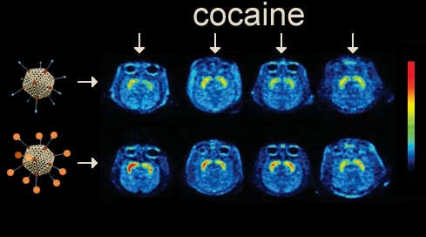Cocaine addiction is a major problem for which there is no approved pharmacotherapy. One of the novel approaches being explored right now to treat cocaine addiction is based on classical vaccination. The basic strategy uses a cocaine vaccine to coax the immune system into generating specific antibodies that would bind the drug while it is still in the bloodstream and prevent it from entering the brain. One of the most challenging aspects of this approach is that, in order to be successful, the vaccine must be able to induce sufficiently high and sustained levels of anti-cocaine antibodies. The present study in non-human primates showed that this was possible. Scientists use a non-infective adenoviral (cold virus) particle studded with a high density of cocaine-like molecules (the antigen) to make the vaccine. When injected into non-human primates, the result was a robust immune response that successfully reduced the ability of cocaine to reach and bind to the dopamine transporter (DAT), its target in the brain. The key experiment (shown in the illustration) used positron emission tomography (PET) to measure the level of DAT occupancy in the brain reward center of four different cocaine-injected animals after immunization with a naked (top) or cocaine analog-loaded (bottom) adenovirus particle. Actively immunized animals (lower tier) display significantly higher DAT availability (as reflected in higher levels of red) compared to the controls (upper tier)—indicating that cocaine was less efficient at entering the brain and acting at this site. Because the main effect lasted for at least 4 months, the results of this study, if replicated in humans, suggest that an adenovirus-based vaccine could be an effective complement in the treatment of cocaine abuse and addiction.
For a copy of the article, go to: http://www.nature.com/npp/journal/vaop/naam/pdf/npp2013114a.pdf (PDF, 680KB)
